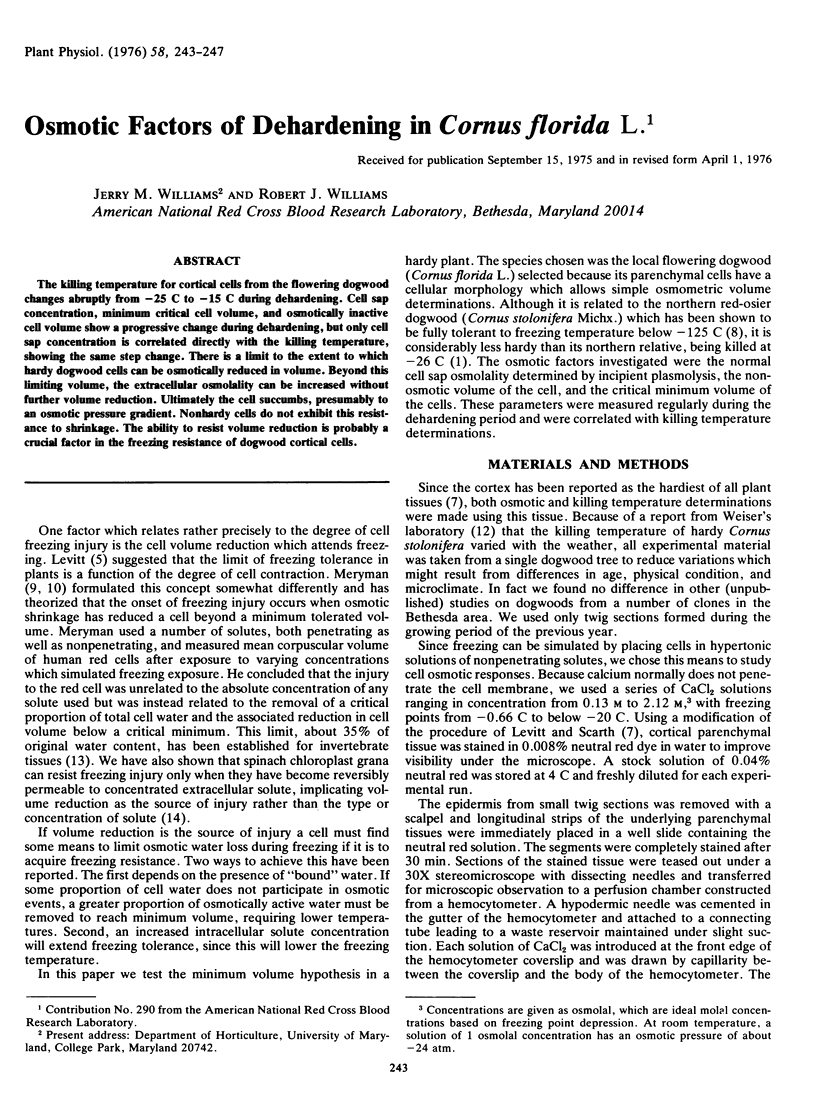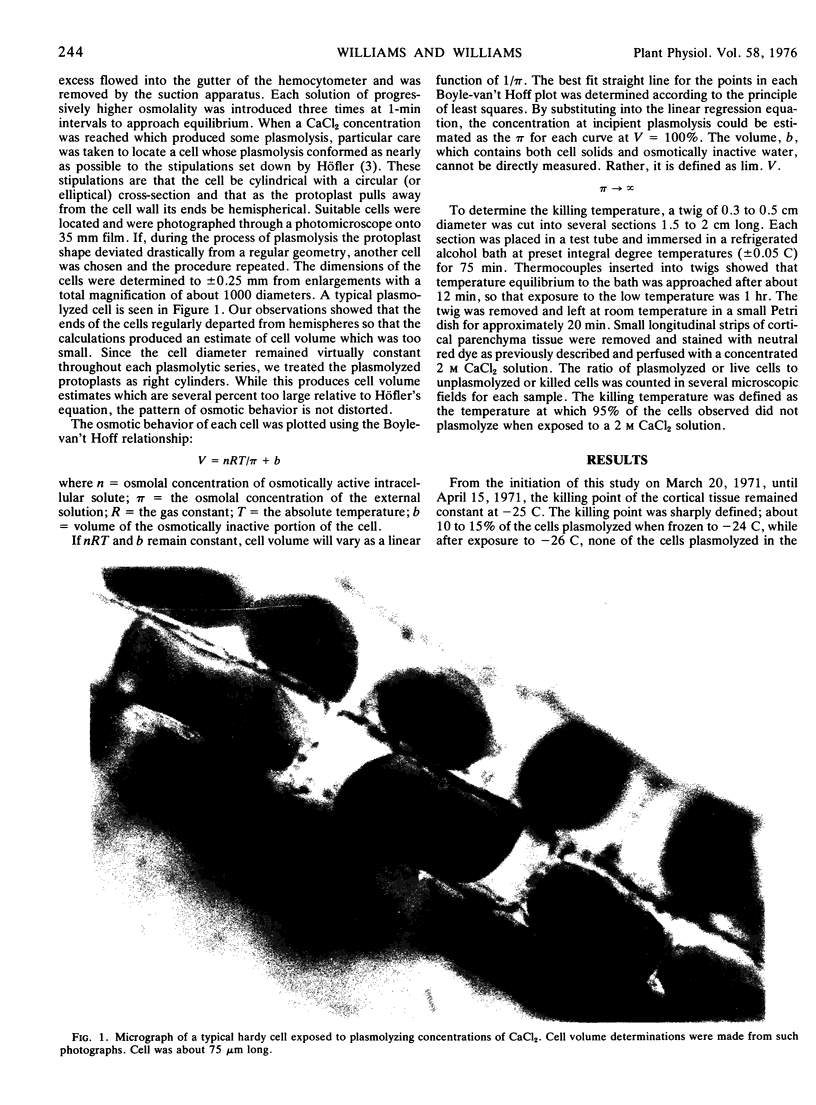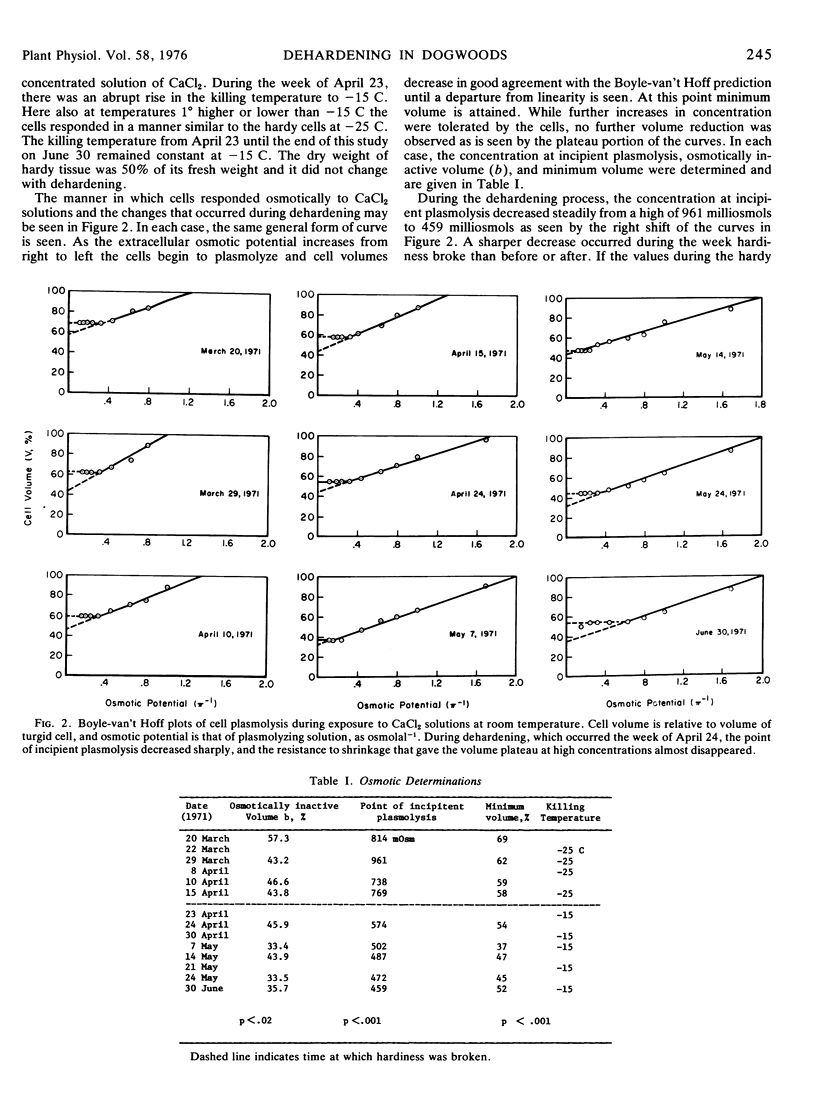Abstract
The killing temperature for cortical cells from the flowering dogwood changes abruptly from −25 C to −15 C during dehardening. Cell sap concentration, minimum critical cell volume, and osmotically inactive cell volume show a progressive change during dehardening, but only cell sap concentration is correlated directly with the killing temperature, showing the same step change. There is a limit to the extent to which hardy dogwood cells can be osmotically reduced in volume. Beyond this limiting volume, the extracellular osmotically can be increased without further volume reduction. Ultimately the cell succumbs, presumably to an osmotic pressure gradient. Nonhardy cells do not exhibit this resistance to shrinkage. The ability to resist volume reduction is probably a crucial factor in the freezing resistance of dogwood cortical cells.
Full text
PDF




Images in this article
Selected References
These references are in PubMed. This may not be the complete list of references from this article.
- Baker H. The intracellular pressure of Nitella in hypertonic solutions and its relationship to freezing injury. Cryobiology. 1972 Aug;9(4):283–288. doi: 10.1016/0011-2240(72)90049-1. [DOI] [PubMed] [Google Scholar]
- Jung G. A., Shih S. C., Shelton D. C. Seasonal changes in soluble protein, nucleic acids, and tissue pH related to cold hardiness of alfalfa. Cryobiology. 1967 Jul-Aug;4(1):11–16. doi: 10.1016/s0011-2240(67)80181-0. [DOI] [PubMed] [Google Scholar]
- Meryman H. T. Modified model for the mechanism of freezing injury in erythrocytes. Nature. 1968 Apr 27;218(5139):333–336. doi: 10.1038/218333a0. [DOI] [PubMed] [Google Scholar]
- Williams R. J., Meryman H. T. Freezing injury and resistance in spinach chloroplast grana. Plant Physiol. 1970 Jun;45(6):752–755. doi: 10.1104/pp.45.6.752. [DOI] [PMC free article] [PubMed] [Google Scholar]



